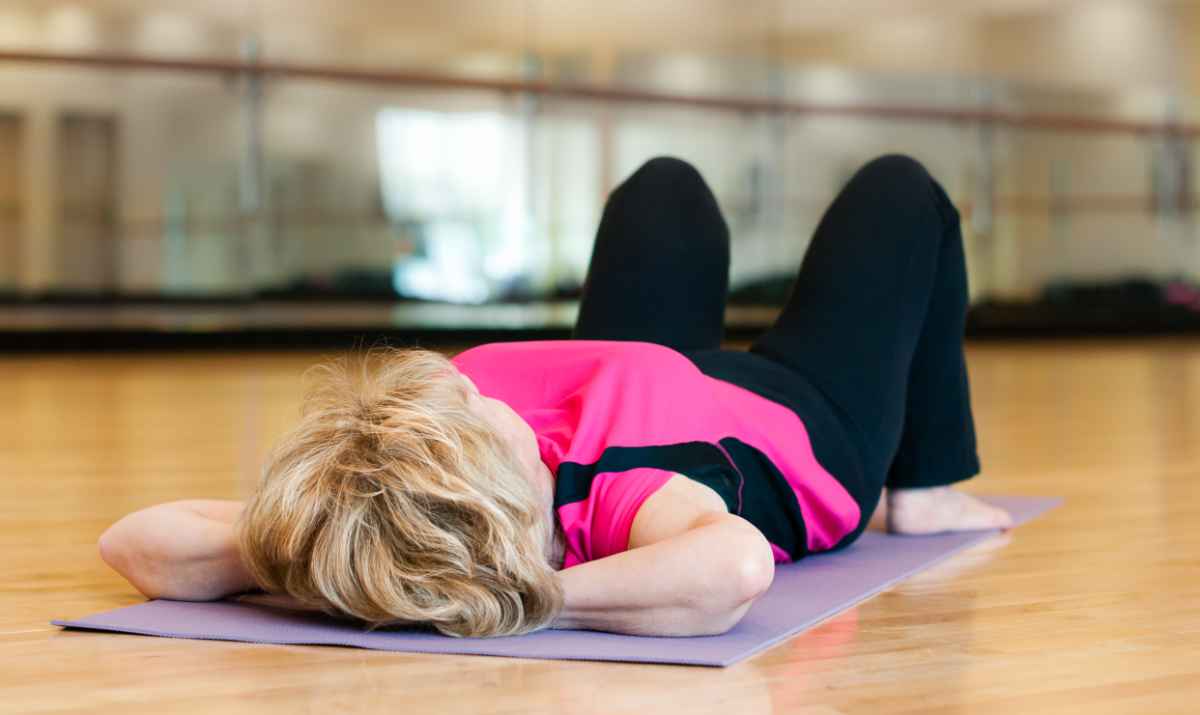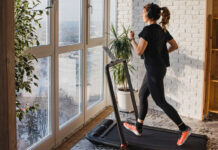We all know exercise is good for us, but there’s one muscly area of the body that even the fittest of folk may be completely neglecting – the pelvic floor.
Pelvic floor muscles help maintain the position of pelvic organs, and all bladder, bowel and sexual functions need them to be strong. Just like any other muscles, they can become damaged and weakened, or – conversely – strengthened by training.
However, possibly because pelvic floor muscles are hidden, unlike our abs or biceps, they tend to be neglected, with few people (particularly women, who need to do them most) regularly exercising them – despite the fact pelvic floor exercises are very easy and can even be done sitting at your desk or lying in bed.
✨Typically 🐶puppy & down dog 🐾 are used for widening the sit bones & lengthening the muscles of the #pelvicfloor ✨However, they can be used to up train due to gravity assisting our contractions the pelvic floor muscles 🙌
#yogapractice #yogaforbackpain #yogaflow https://t.co/hGKM4ZW2va
— StephaniePrendergast (@PelvicHealth) October 21, 2021
The Chartered Society of Physiotherapy (CSP; csp.org.uk) says up to a third of women have a problem with their pelvic floor muscles at some point in life. “We can clearly see other muscles in our body, but the notion of having a pelvic muscle is much harder for people to grasp,” says pelvic floor physiotherapist Kate Lough. “The pelvic floor is in an intimate part of the body, so there’s embarrassment when it comes to people seeking help for issues such as leaking.”
Lough, who is chair of the Pelvic, Obstetric & Gynaecological Physiotherapy network (thepogp.co.uk), says there’s a lack of education about the pelvic floor, and stresses: “Knowing about its role is important, as it helps people understand how to protect it when the various things that influence it come into play.”
Pelvic floor dysfunction
The pelvic muscles span the base of the bony pelvis. They’re constantly pulled down by gravity while we’re standing, which means they weaken as we age. Childbirth, as well as other factors including constipation, smoking, illness, certain high-intensity exercises, menopause, injury and obesity, can also damage our pelvic floor muscles.
But you can improve pelvic floor strength at any age, promises the CSP. The most common pelvic floor problems, they note, are leaking urine when active, sneezing or coughing (stress urinary incontinence), and pelvic organ prolapse (a feeling of something coming down in the vagina). The CSP says urinary incontinence affects one in nine men and one in three women – yet only around 25% of women seek help for it (CSP research has found 43% of adults think leaking urine is just a normal part of giving birth or getting older).
Well done to all the physios who helped make this happen @ThePOGP @pelvicroar https://t.co/bAp5outpYM
— Kate Lough (@lough_kate) June 13, 2021
But leaking urine isn’t just something you just have to put up with, and it can be tackled with regular pelvic floor exercises over a period of time. And these exercises are definitely worth doing as pelvic floor muscles help keep bladder and bowel openings closed to prevent incontinence, and relax to allow easy bladder and bowel emptying. Good pelvic floor muscles can also benefit your sex life by improving vaginal sensation.
“It’s best to educate yourself about your pelvic floor early in life,” says Lough, “but I’m working with patients aged 80, who are struggling with incontinence but are able to greatly improve their symptoms with pelvic floor exercises. It’s really never too late to start them or seek help from a qualified professional.”
How to do pelvic floor exercises
The CSP recommends all women exercise their pelvic floor muscles every day, throughout their lives. Curious about how to do pelvic floor exercises correctly? Here’s what the CSP says…
1. Don’t forget to breathe!
In a comfortable lying or sitting position, imagine you’re trying to stop yourself from passing wind and urine at the same time – drawing the pelvic floor muscles upwards and forwards from the back passage towards the bladder. You may feel a lifting up and tightening as your muscles contract. Try not to hold your breath; breathe in through your nose, drawing air to the bottom of your lungs and letting your tummy relax, then breathe out through your mouth. You could also try counting out loud to encourage normal breathing. Your lower tummy may tighten, which is normal, but keep your buttocks and legs relaxed. Let your pelvic floor muscles relax fully after every contraction.
2. Try long squeezes
Tighten your pelvic floor muscles, hold them tight, then release and let them fully relax. How long can you hold the squeeze? Repeat the squeeze and hold until the pelvic floor muscles tire. How many times can you repeat the squeezes?
3. And short squeezes
Quickly tighten your pelvic floor muscles, then immediately let them go again. How many times can you do this quick squeeze before the muscles get tired? Always let the muscles fully relax after each squeeze. Aim to be able to do 10 long squeezes, holding each squeeze for 10 seconds, followed by 10 short squeezes.
4. Check you’re contracting your pelvic floor muscles correctly
New evidence alert from @NIHRevidenceBiofeedback offers no additional benefit to pelvic floor muscle training https://t.co/KdwZS8lDve via @NIHREvidence
— POGP (@ThePOGP) September 27, 2021
Using a mirror, check the area between your vagina and back passage moves up and inwards away from the mirror when you contract your pelvic floor muscles. Then feel inside your vagina with your thumb or index finger. Tighten your pelvic floor muscles, and you should feel them tightening around your thumb or finger. If you’re sexually active, you could try to squeeze your muscles during penetration, and ask if your partner can feel the squeeze.
5. Do the exercises regularly
The CSP recommends you do pelvic floor muscle exercises at least three times a day, and says you may find it easier to do them, at least initially, when sitting or lying down.
6. Build up your exercising
You may need to start with little and often, if you find you can only hold the squeeze for a short time, or only do a few before the muscles tire, says Lough. “Build up your exercise routine gradually over the weeks and months, and you should notice an improvement in three to five months,” she says. “Then keep practicing once a day to maintain the improvement.”
As your muscles improve, aim to do the exercises in other positions such as standing up, she advises. Eventually, you can practice using the muscles while doing activities such as walking and bending.
7. Be patient
“Pelvic floor exercises do help in the majority of cases, but it may take weeks or months before you notice a substantial improvement,” Lough says. “If after this time you’re still not noticing an improvement, I’d recommend seeking help from a specialist pelvic health physiotherapist. It’s important to get the right muscles working in the right way.”
Best-selling kegel devices for women
Check out our list of best-selling kegel devices for women.
No products found.
You may be interested in…
This article may include affiliate links to products and services where we may receive a small fee to support the running of this site if you make a purchase or is a sponsored article from one of our select editorial partners providing valuable advice and information to our readers.







































































